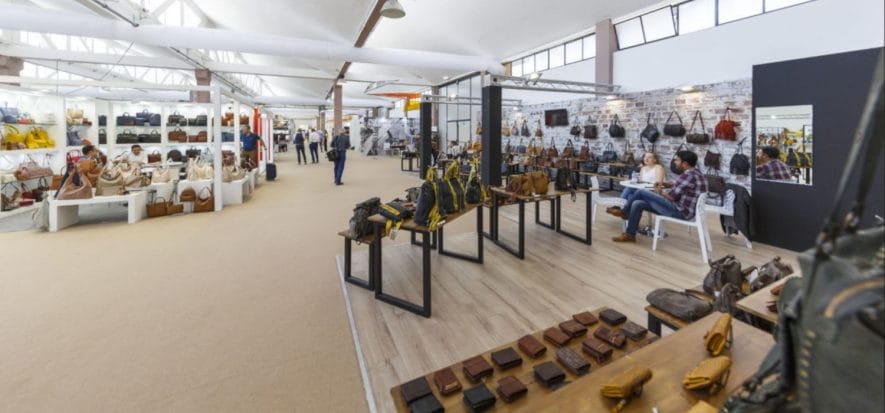New products, recovery of scraps from other processes, and a little concern for the new year. These are the three key concepts that are characterising the fourth edition of Gardabags, Expo Riva Schuh area dedicated to bags and leather goods. The section of pavilion D houses 78 exhibiting companies (36 Italian and 42 foreign). In short, the proposals have courage. But what about the market?
Mondraghi’s proposal
Among the most particular proposals of Gardabags there is undoubtedly that of the South Tyrolean Mondraghi. Compactness and luxury are the characteristics of the mini-wallet signed by the company from Laives. The product is characterised by an anodised aluminium shell for the cards, and the external part in leather produced in Italy. The model is available in 3 versions: The Original (full grain), Saffiano (printed and pigmented cowhide) and Racing (printed leather that reproduces the typical carbon fibre weave).
The up-cycling of Original Arts
The bags and accessories of Soruka line of Original Arts speak Indian. The project is a concrete application of the “up-cycling” concept. Each piece is handmade by Calcutta and Delhi artisans recovering the cut-outs of local leather goods. “The waste of these processes is a big problem in India, because they are usually sold off to farmers who burn them and then use them in the fields as fertiliser – explains David Cambioli, head of AltraQualità, distributor for Italy -. This production instead closes the circle of sustainability and, given our and Original Arts attention to ethical and solidarity aspects, we guarantee fair compensation to local artisans”.
Proposals do have courage
The one offered by Soruka, a line of bags and accessories, is just another example of how leather is a natural and environmentally friendly material, the result of an industry that recovers the waste of another process. Despite this, many of Gardabags exhibitors say they are “worried” about the real attention of consumers to environmental issue. “Those who sell the so-called eco-leather sell it well, but this is because those who buy now no longer know how to distinguish between real and fake leather” explain from Pelletteria Veneta stand, a company that divides production and sales between the mainland in Marghera and Venice. “Those who buy seem to be interested in spending little. But a well-made product, the work of a craftsman, a high-quality leather, cannot and must not be sold off”, they highlight from the booth of another Italian company. In short, 2020 is full of unknown factors.
Photos gardabags.it










